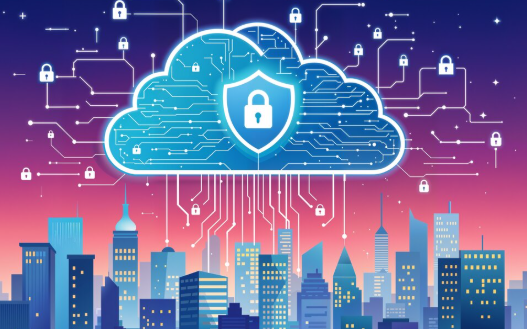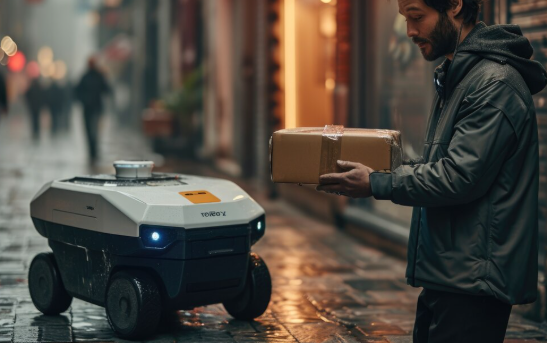Introduction
Customers want faster responses to all of their needs. No one prepares (or plans) today; no one is willing to wait. From the perspective of the information technology sector, the only way to thrive in the current, fiercely competitive product and service market is to constantly push the envelope and set the standard for others to follow. This has brought the concept of 10-min delivery to the forefront.
Is 10-minute delivery the next big thing in the supply chain?
Numerous large and small startups are seriously considering implementing this concept into their supply chain delivery.
Zomato’s endeavor to attain 10-minute delivery includes strategies like finishing stations, frozen food, predictive analytics, and robotic equipment set up to automate meal preparation. A popular startup for groceries called Zepto initiated stealth mode with a bang and received US$60 million in funding for their 10-minute grocery delivery plan. Grofers (now BlinkIt) has begun 10-minute grocery delivery in numerous cities. The food delivery partner app, Swiggy, has launched a new app called Instamart with the promise of grocery delivery in minutes. Even Ola has begun field testing 10-minute grocery delivery in Bengaluru.
How the newest stars have risen to the top with lightning-fast service
The largest differentiator endorsed by these startups is the condensed time frame they can achieve between placing orders and completing delivery. The complete business model is calibrated for speed, eliminating the fulfillment, operational, and inventory norms followed by the legacy players like DoorDash, Instacart, and Peapod. The most recent start-ups are likewise aiming for a distinct consumption occasion in comparison to the currently dominant companies.
Established direct-to-customer e-commerce companies like DoorDash, Peapod, and Instacart are specialists in packing and delivering, depending on retailers’ inventory and physical assets. On the other hand, the new generation of startups is taking a capital risk to achieve faster delivery times and better control over the customer experience.
There are three prominent shifts in the delivery business model:
- They own the inventory: The current providers usually maintain their own inventory instead of depending on a partner’s pre-selected array. It gives them better control of the assortment and margins but brings capital risks and requirements to play along with supply chain optimization to be more profitable.
- They manage real estate liabilities: The secret behind the 10-minute delivery speed is having an extremely efficient micro-fulfillment center (MFC), or dark stores situated close to the end-customer where goods can be picked up five to ten times faster than the store shelves and delivered quickly. Although efficient, setting up these facilities requires considerable CapEx and managing real estate costs.
- They have a peak labor commitment: Most providers depend on the in-house workforce to some extent instead of flexible and less expensive gig-economy contract workers. For example, the dark store models need highly trained and skilled employees to do the pickup; also, highly automated MFCs (micro-fulfillment centers) need operators to run. Moreover, with the promise of quick 10-minute delivery, these delivery companies may be required to hire at least some full-time employees as drivers to ensure they can consistently match consumer demand instead of depending on contractual workers.
How is 10-minute delivery achieved?
The answer to how companies will be able to deliver goods in 10-minutes relies on two factors.
Mini warehouses:
To deliver goods in 10 minutes, the warehouses must be near customers’ residences. Hence, most 10-minute delivery companies build numerous mini-warehouses in every city where they operate. Ex: BlinkIt has numerous mini-warehouses within two kilometers of end consumers’ residences. Swiggy’s Instamart and Zepto also follow a similar strategy. In addition, Dunzo has a mini-warehouse chain called Xpress Mart situated within 5 km of customer houses.
Limited inventory:
10-minute delivery has created a significant shift in the mindset of online delivery companies. Previously, they kept a large inventory in the warehouses that would give more choices to consumers, similar to supermarkets. But it meant the delivery was relatively slower. Now they have come to the conclusion that their real competition is Kirana shops. Hence, they have changed their strategy to maintain limited inventory in the mini-warehouses similar to Kirana shops. Ex: BlinkIt has over 8000 items in its usual stock. However, in the 10-minute delivery model, 1800 items are stored in the warehouses.
How can businesses make money with 10-minute delivery?
Traditional online distribution is also not very profitable. So, at least for the first few years, 10-minute delivery is not profitable. Here are three ways you can make 10-minute delivery more profitable.
- Scale: Achieving scale is the smartest way for online-delivery companies to generate more revenue. Setting up mini-warehouses, creating a supply chain, and paying delivery people are all expensive. So, to break even and start making money, the money made from online delivery needs to be more than what it costs. If only a few customers order online, then scaling is impossible, and income from online delivery will continue to be less than expenses. But, let’s suppose somehow these delivery companies manage to get more people to order online through discounts and free delivery. In that case, they will be able to scale, generate revenue, and become more profitable.
- Subscribe to groceries: Items like books or clothes are ordered occasionally, but groceries are needed daily or weekly. 10-minute delivery can utilize this fact and incorporate a “subscribe to groceries” feature in their app., which will allow groceries to be delivered to the customer’s doorstep at daily or weekly fixed intervals. It will be beneficial for both consumers and the delivery companies. Customers don’t have to worry about placing grocery orders every time at the last minute. On the other hand, delivery companies will benefit due to the “sunk cost effect.” Since customers would have already paid the subscription charges, they would most likely order groceries from the delivery company and not look at any other alternatives. Therefore, the delivery companies can develop a loyal customer base and predict their revenue stream.
- Own brands: As Amazon has its own brands, such as Amazon Basics and Solimo, the 10-minute delivery companies can emulate the same. When the company’s own products have a higher profit margin, it can be more profitable for them to make their own brands.
Conclusion
A successful 10-minute delivery could lead to mass adoption by more delivery companies in the long run. However, in order to make the model more sustainable, some risks and challenges must first be overcome. So, let’s see how companies use technology and other tools to optimize their 10-minute delivery model and make it profitable in the future.



